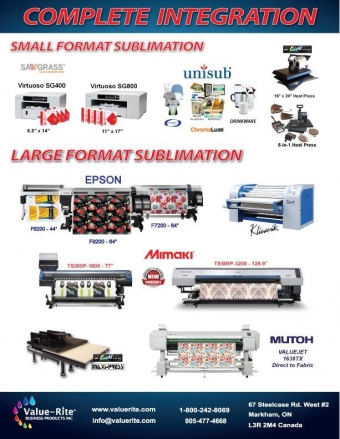Imprint Magazine: Understanding Colour To Maximize Efficiency And Productivity

Understanding Colour To Maximize Efficiency And Productivity
By Ryan Lee,Wasatch
To some, colour management seems like a mystical practice too difficult to under-stand, but for any print professional this shouldn’t be the case. Understanding a few basic colour principles and what colour management tools are available, will remove some of the mystery and help you produce quality prints in a timely fashion.
Colour management professionals use hardware and software tools to determine how much ink your substrate can hold and the correct percentages of each channel to produce accurate colour.
The hardware tools are called densitometers or spectrophotometers and the software tools are most commonly ICC profiling software and rip software. Each piece plays its part.
The densitometer reads colour to give the user information that the naked eye can’t see. The profiling software uses a few colour readings and makes calculations to reproduce the potential thousands of colours in your files. The rip software helps control the entire colour management process from interpreting files to controlling the actual printer.
The goal of a good colour management expert should be to find an appropriate combinations of settings to produce a large colour gamut and neutral grays while maintaining clean lines in your graphics.
This combination of settings is commonly called a colour profile. Realize however that these settings are specific to the combination of ink, fabric, paper, software and printers. If you change any of these variables then expect your colour output to change. Using one profile for everything you print on will result in different colour on each fabric.
Unless you have mastered the colour management steps you might be asking your supplier for profiles. Make sure this supplier understands what you are printing on so the profiles they provide match.
To verify if you have a good profile, print images with memory colours like faces, fruits and vegetables.
If you can print good skin tones, solid blacks without bleeding and neutral grays then you have a great starting point. Most of the files you print will be reproduced accurately. Realize that some colours can’t be reached with the particular ink and fabric you are using. These colours are considered out of gamut. Rip software can help determine if you can possibly achieve that fluorescent colour you’re targeting before you ever print. How this is done will vary depending on the rip brand but look for this feature.
The goal of a good colour management expert should be to find an appropriate combinations of settings to produce a large colour gamut... while maintaining clean lines in your graphics.
In the real world the Pantone or spot colour in your file may be within your ink’s colour gamut and may print ‘accurately’ to ICC standards but the colour you are printing still isn’t what you want to see.
Rather than endlessly editing the colour values in Adobe Illustrator or Corel Draw, rip software can help you do a spot colour replacement with colour values from actual prints you choose. Some rips will quickly generate a set of patches similar to the colour you are trying to print allowing you to do a visual match. Once the visual match is decided on use the correlating colour values printed next to the patch to force the rip and printer to replace the Pantone’s colour values with the ones of your choosing. This replacement can be saved and used automatically whenever the same Pantone is found in a future file. For this method to function most effeciently, preserve solid colours as vector. If you rasterize, causing the colour values to change from pixel to pixel, then the replacement won’t be useful.
As mentioned doing spot colour replacements isn’t a useful tool for manipulating fully rasterized data such as a photo. Some customers prefer a warmer or cooler looking print than what the provided profile is giving. To affect a global colour change in all raster data apply a correction curve in the rip software. This method does require some experience, however it can be a powerful colour tool and save you from opening each file in your design application to apply the curve before sending to print.
Returning to the issue of changing variables such as ink or transfer paper and the effect it will have on your colour. the same truth holds to your finishing process control. Any change in humidity, heat press pressure, temperature or time can change the final product. If you want consistent colour then your process must be consistent.
For each type of fabric document the correct heat press settings and keep them visible at the press. This can help prevent wasted time and materials.
With diligent attention to detail and full utilization of colour management so ware you can provide excellent quality colour your customers will appreciate while doing so efficiently to improve your bottom line.
This article was provided courtesy of Ryan Lee, Colour Specialist at Wasatch & Pablo Gomez, Colour Management Specialist at Value-Rite Business Products Inc.
To learn more, be sure to attend : UNDERSTANDING COLOUR TO MAXIMIZE EFFICIENCY AND PRODUCTIVITY presented by Value-Rite Business Products Inc. and hosted by Ryan Lee.




























